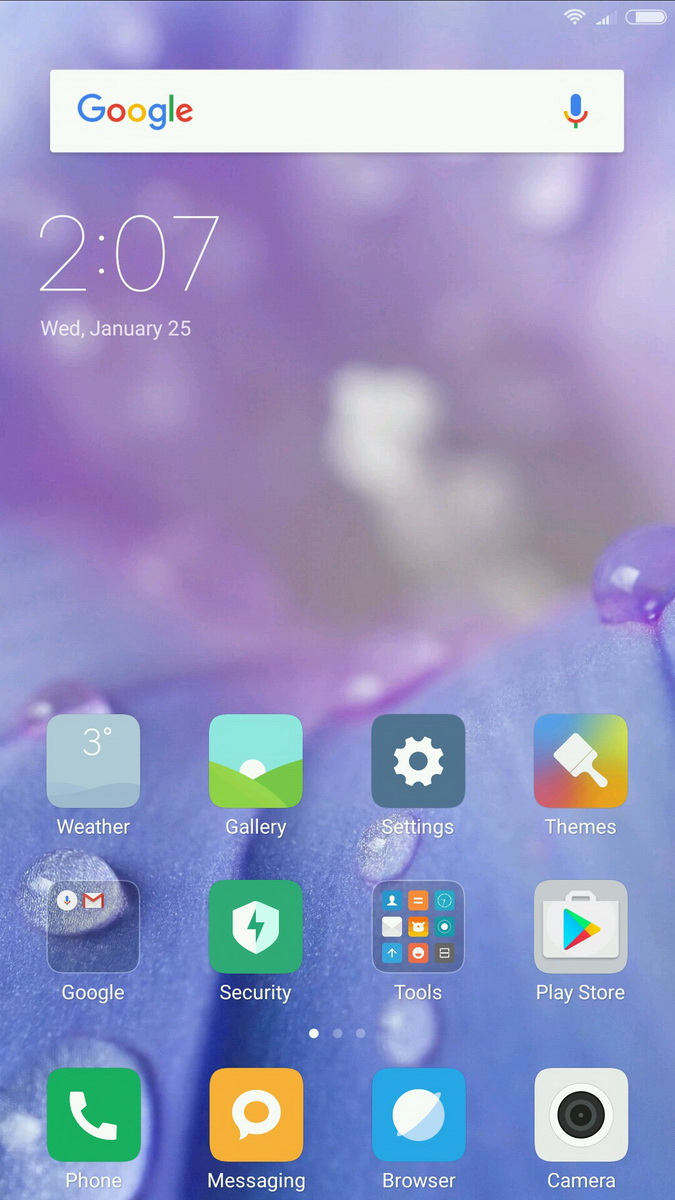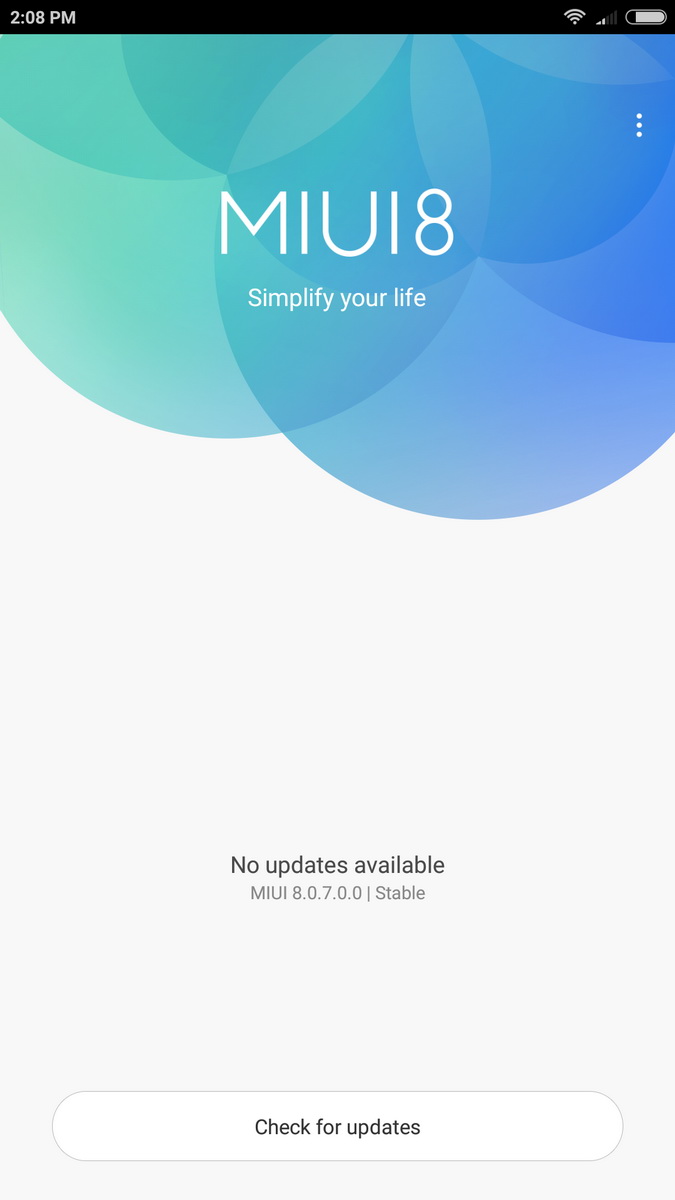
“Innovative, exquisite, and powerful: The Mi Mix is a vision of smartphones to come.”
- Stunning bezel-less screen
- Beautifully built ceramic body
- Powerful processor
- Massive battery
- Slippery and fragile
- Limited connectivity options
- Import only, and expensive
This is the Xiaomi Mi Mix, and you’re allowed to say “wow.” It may look like concept phone, a vision of the future, but you can actually buy it right now. The most striking feature is the almost bezel-less screen, which takes up almost the entire front of the device, and extends right up into the top corners. The technology to make this possible is amazing, but has Xiaomi come up with a usable phone that represents the future of smartphone design? We’ve been finding out.
Drop dead gorgeous
You can’t stop staring at the Mi Mix. It’s beautiful in a way that other smartphones simply aren’t. Designs tend to follow the same trend, and although other phones may be attractive, they don’t even come close to the pure visual excitement generated by the Mi Mix. Why? Because it’s all screen. The 6.4-inch IPS LCD has an unusual 17:9 aspect ratio and covers more than 90 percent of the front panel. The Samsung Galaxy S7 Edge manages 76 percent screen. A 14 percent difference may not sound much, but just look at the pictures. It’s an absolute world away from the S7 Edge. Look at the top corners, for instance. They don’t end in a right angle, but actually curve with the body. It’s not visual trickery either, the edge of the screen is really curved.
The Mi Mix is otherwise a very simple shape, and its glorious minimalism doesn’t stand out until you start examining the subtleties, from the “Mix designed by Mi” wording on the back, to the absolute lack of speakers or sensors on the front. Instead, the speaker is behind the screen itself and uses specially designed piezoelectric technology to transmit sound to your ear. Xiaomi has taken away the regular proximity sensor, too, making way for an ultrasonic module, which is located behind the screen. The Mi Mix isn’t all looks, it’s also an impressive technical achievement.
The body is superbly built. It’s made from ceramic, rather than metal and glass. Our review model came in glossy black, but Xiaomi now makes a white version, too. It’s stunning, but unless you carry a cloth around with you, or wear white gloves like you’re cradling a priceless artefact every time you pick the phone up, it’s going to get covered in fingerprints and smudges. Really, really covered.
The Mi Mix isn’t all looks, it’s also an impressive technical achievement.
Fingerprints aren’t the only problem. The Mi Mix is so slippery, it’s like it’s actively trying to escape. No matter how you hold it, it slips, wriggles, and slides around in a continuous bid for freedom. The ceramic body offers no resistance, and there’s no texture or ridges down the side. Engage in just about any activity from taking photos to checking your email, and you run the gauntlet of the Mi Mix taking a dive. It’s almost essential to wrap the phone up in a case, unless you like the feeling that an awfully expensive accident is about to happen every second of the day.
Not to worry, owning the Mi Mix is like having a partner you absolutely adore. You’ll make ridiculous concessions just to be with them. We’ve taken to wearing a pair of grippy rubber kitchen gloves all the time. No more fingerprints, and no more worrying about accidents. Sure, people stare when you wear the pink ones, but when the Mi Mix is in your hand, you’ll be so smitten you won’t care.
Stellar performance
Our Mi Mix came with 6GB of RAM and a Qualcomm Snapdragon 821 processor running at 2.35GHz, but when clearing the RAM, only about 4GB of RAM was ever listed as available for use by apps. A cheaper alternative model with 4GB of RAM as standard is also available, but you won’t get the 18k gold accents around the camera lens and fingerprint sensor, either.
The Snapdragon 821 chip has proved to be an excellent performer, and we’ve enjoyed using it before in the OnePlus 3T and the Google Pixel phones. It’s equally superb here, keeping the operating system zipping along, making web browsing and app use fast and fault free, plus it has superb gaming ability.
Games are more fun on the Mi Mix’s big, bright, and beautiful screen. I hesitate to say more immersive, because it doesn’t seem possible; but the right game is definitely more engrossing here. Danmaku Unlimited, an all-action bullet-hell game, plays beautifully in HD on Hard mode; yet despite being a game I’ve played many times, it was just that little bit more exciting, due to the Mi Mix’s combination of no bezel and a large screen size.
Xiaomi hasn’t gone mad with the display, opting for an IPS LCD panel and a 1,920 x 1,080 pixel resolution. It doesn’t suck the battery dry in moments, and is perfect for online video. Watch YouTube, tap the fullscreen button, and videos take up the whole of the display, curved corners included, rather than being squeezed down into an unusual format, or not supporting the full display. It’s a real treat.
Put the Mi Mix through a couple of benchmark tests, and AnTuTu 3D gives it an incredible 153,637, putting it in the top five overall results. Xiaomi has stuffed a whopping 4,400mAh battery inside the Mi Mix, which by most modern standards, is huge. It’s an equally large benefit, too, and we easy got two days regular use out of the phone before feeling the need to plug it in the charger. This was more down to battery anxiety than any alerts the phone sent out.
In case it’s not obvious, there’s more than enough power, energy, and speed for everyone inside the Mi Mix.
Highly customized Android Marshmallow
Disappointingly, but not surprisingly, the Mi Mix has Android 6.0 Marshmallow installed. It’s not the latest version 7.0 Nougat, mainly due to MIUI, Xiaomi’s own user interface. It modifies Android extensively, to the point where Android Pay won’t work because it considers MIUI a custom version of the operating system.
Does the interface make it unpleasant? Not really. Version 8 of MIUI is installed, and our imported version came with Google Play all ready to go. That means you don’t have to deal with Xiaomi’s app store, and can install all the usual Google apps — from Maps to YouTube — directly from Play. Early setup takes a while, but we’ve never had any issues with installation or updates on a Xiaomi device.
Our review model came with a selection of pre-installed Xiaomi tools — including a QR code scanner, a compass app, a voice recorder, and the usual contacts, mail, music, file explorer, and calendar apps — but that’s all. Standard phone operation is dealt with by Xiaomi’s dialer, messaging app, and web browser. Anyone who has used Android on a Nexus or Pixel phone, will notice alterations to the notification shade and the settings menu, plus that app icons are spread across home screens and not in an app drawer.
There are a few decent apps provided by Xiaomi. The standard web browser is fast, the weather app is pretty and information packed, and the calendar app is easy to use. If you don’t like the minimalist look of MIUI’s app icons, or want to change a variety of aspects, there are many different themes available to download and apply. Dig deeper, and MIUI can be customized to an even greater degree.
Yes, we’d rather the phone ran regular Android, but MIUI is easy to use and attractive to look at. It’s also the price you have to pay for importing a phone from China, where Google services are barred, and we vastly prefer it over most other Chinese manufacturer user interfaces.
We do worry about security threats on outdated versions of Android, and we hope to see the Mi Mix get the Nougat update sooner rather than later. However, Xiaomi doesn’t have a good track record with updates, so don’t hold your breath. If you care about security and up-to-date Android, this phone isn’t the one for you.
Average camera performance
Xiaomi hasn’t gone mad with the Mi Mix’s camera setup, so you get a 16-megapixel rear camera and a specially produced 5-megapixel selfie cam under the screen. That’s right, under the screen. Let’s talk about that one first.
Xiaomi had to source a really small module for its front camera, because it has to fit in a very small space in the only bezeled area on the phone, just below the screen. This isn’t the ideal spot for a selfie cam, unless taking photos with a great view up your nose is your thing. To get around the awkward placement, when you swap to the front cam the phone tells you to rotate it so the camera is in a more traditional position, and the app rotates accordingly.
That’s fine if you only use Xiaomi’s camera app, but not if you want to use Instagram, Snapchat, or any other photo app’s camera mode. Sure it works, but the camera gets blocked by your hand, or your picture comes out at a weird angle. Flip the phone on its head, and the app doesn’t follow, so it’s upside down, making it awkward to tap a shutter release button. The volume button sometimes activates the shutter to make life easier, but not in every app. The quality is only average once you do snap a selfie, but there are some fun live filters to try out, and a very good beauty mode with a pro and smart setting. Smart is the way to go, and it actually enhances the shot.
Around the back is a 16-megapixel camera with a Sony IMX318 sensor, an f/2.0 aperture, and phase-detection autofocus. Sadly, there’s no optical image stabilization, but there is electronic stabilization. The specs may not be stellar, and although we’ve been spoiled by some great dual-lens cameras recently, the Mi Mix’s rear camera takes good pictures. However, the HDR mode is aggressive — pushing out shadows and really enhancing blue skies, — and although we found the pictures pleasing, some may prefer the way the camera performs without it.
The Mi Mix is happy to blur the background of images very effectively, leading to some great bokeh shots without the need for a second lens. The same set of filters for the selfie cam can be applied to the rear camera, plus there’s a panorama mode, a tilt-shift setting, and a manual mode.
It’s not a standout camera, but it’s not a failure, either. We’ve been happy with the overall results from the Mi Mix.
Calls and connectivity
How do you hear people during a call if the Mi Mix doesn’t have a speaker? Xiaomi has used special piezoelectric technology behind the screen to transmit sound through it, similar to how bone-conducting sound works. The effect is unusual, but there’s no noticeable drop in quality of volume.
The Mi Mix is so slippery, it’s like it’s actively trying to escape.
In fact, it works really well, and is arguably better than a traditional speaker. Why? It doesn’t really matter where the Mi Mix is held against your ear, the top, middle, or lower part of the display still delivers the same amount of volume and clarity.
The ultrasonic proximity sensor doesn’t seem to be quite as successful. It rarely shut down the screen when the phone was against my face, and sometimes accidentally activated an app. It doesn’t dim the screen if you put your hand over the screen though, which is good.
Because the Mi Mix is an imported phone that’s not really designed for use outside of Xiaomi’s regular territories, it doesn’t come with all the necessary bands to connect to all the usual U.S. networks. Use an AT&T or T-Mobile SIM card and you’ll mostly see 3G data speeds, with 4G unlikely. We tested the Mi Mix in the U.K. with the O2 network, and primarily connected at 3G, too, although there is a better chance of 4G using EE. This is a common issue with imported smartphones, not just Xiaomi’s devices.
Warranty, availability, and price
Just because the Mi Mix sounds like a concept phone, doesn’t mean it’s not for sale. You can buy it right now, if you’re prepared to pay a hefty price, and do some searching. Our review Mi Mix was supplied by GearBest, a popular importer of Chinese electronics, where the new white model is priced at just over $1,000. Yes, $1,000. Don’t forget, this is a cutting-edge smartphone, produced in small numbers, and that means you pay a premium for the pleasure of owning one.
The black version isn’t in stock at GearBest at the time of writing, but that is likely to change regularly, along with the final price, which depends on the currency exchange rate. If you want a Mi Mix, you’ll need to have patience and put in some effort to find one.
There are other importers, but GearBest has always delivered a faultless service, and provides a comprehensive warranty should your phone breakdown. This consists of a three-day dead-on-arrival warranty, a 45-day money back guarantee if the phone should be faulty during that time, plus a one-year warranty to cover against defects. You’ll still have to get support from China primarily by email and snail mail, but it really shouldn’t put you off. If you break the phone due to mistreatment, drop it in the bath, or change the software and brick the phone, it won’t be covered.
Our Take
Exquisite to look at, vastly powerful, and technically compelling: The Xiaomi Mi Mix represents the future of smartphones, and it’s available right now.
Is there a better alternative?
If you want the Mi Mix’s amazing screen, then no, there isn’t any alternative. The Mi Mix is unique. If you want a phone with a stunning ceramic body, then you won’t find one of those, either. The camera, processor, and operating system aren’t unique, and in two of those three areas, the Mi Mix isn’t top of the class. The camera is strong, but there are considerably better choices out there. MIUI isn’t as nice as the standard Android Nougat found on a Google Pixel XL.
The Pixel XL is our top Android phone recommendation. Its regular software updates, 24/7 customer support, strong specs, and great camera make it the best Android phone you can buy. The Huawei Mate 9, the iPhone 7 Plus, and even a cheaper flagship phone like the OnePlus 3T are all phones you should buy instead of the Mi Mix.
Although none of these alternatives come close to matching the intoxicating style and bleeding edge tech of the Xiaomi phone, they are your best options right now. However, we recommend waiting to buy a new phone until April at the earliest, because several other major flagships — including the LG G6, Samsung Galaxy S8, and iPhone 8 — are all rumored to offer similar bezel-free designs. All of these phones will also be compatible with U.S. networks and sold through official channels and carriers.
How long will it last?
If the Mi Mix takes a tumble, it won’t last very long at all. Screens that go all the way to the edge of the body may strike any hard surface sharply, and it’s unlikely to survive. When the phone in question is more slippery than a haddock that has been bathing in baby oil, it’s a recipe for disaster. Wrap the Mi Mix in a case, or suffer the consequences.
Xiaomi updates MIUI regularly, but the basic version of Android underneath is still 6.0.1 Marshmallow, and the security patch is from September 2016. That’s absolutely horrible. If you buy this phone, you won’t be safe from hacks and security flaws so long as Xiaomi delays security patches.
Should you buy it?
Should you be an early adopter of any new technology? No, of course not. Should you buy a high-tech two-seat sports car over a solid, reliable hatchback? Not if you’re sensible. It’s the same story with the Mi Mix. No, we can’t recommend it, because it’s ultimately a shockingly expensive concept phone. You can buy a Pixel XL and still have $350 left in your pocket for the same cost as a Mi Mix. It’s the sensible choice, and wearing our sensible hat, it’s the phone we’ll tell you to buy.
However, the Mi Mix is not a phone for anyone wearing a sensible hat. It’s not even for people who own a sensible hat. The Mi Mix is for people with silly hats. It’s Google Glass for the smartphone world. A technical experiment that’s unlike anything else available, and that fact alone will make many, many smartphone fans absolutely desperate to own one. It also has the potential to become quite collectible, due to its limited numbers, high price, and being an import only device. You won’t retire on any proceeds from it, but it will certainly have more cache in the future than a regular Android smartphone.
One thing is for sure, if you do buy the Mi Mix, just be really, really careful with it.
Editors' Recommendations
- Mix Fold 2: everything we know about Xiaomi’s impressive foldable
- Poco’s X4 Pro will look familiar to fans of another phone
- Xiaomi’s Poco M4 Pro lands in India as the Redmi Note 11T at cheaper new price
- The Mi Mix Fold is Xiaomi’s first foldable smartphone
- Xiaomi’s Mi 11 Pro and Mi 11 Ultra are coming on March 29

























